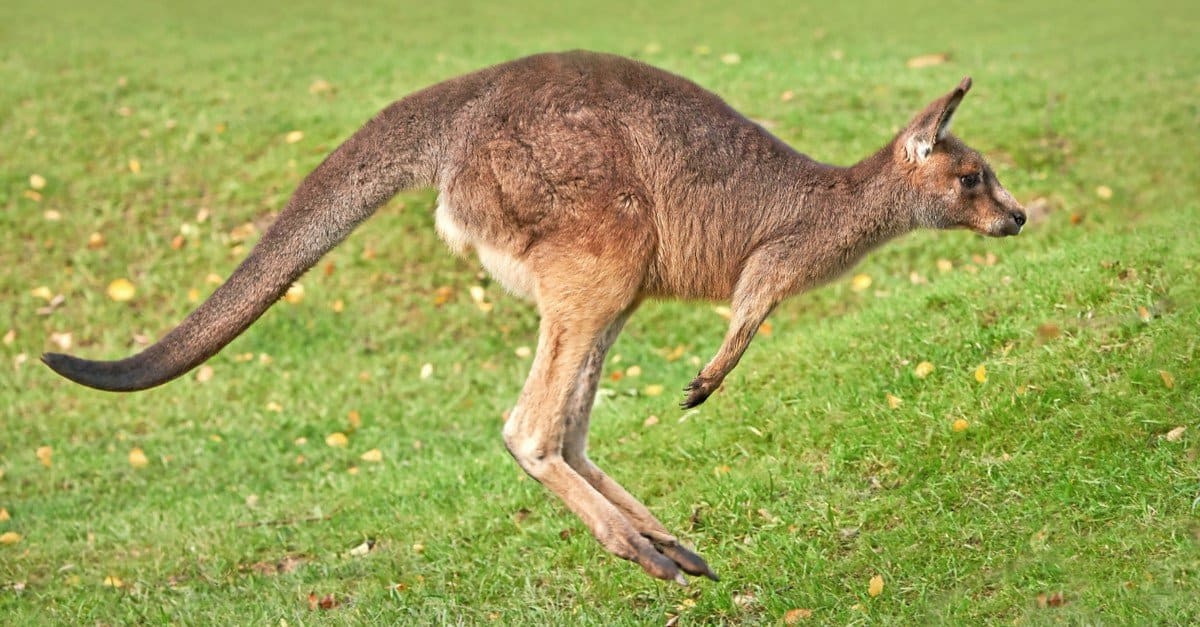The idea of eating kangaroos might seem surprising to some people, but meat from these animals is actually both nutritious and sustainable. In Australia, kangaroos are beloved creatures, but they can also become pests in certain areas.
For this reason, people with a proper license are able to hunt kangaroos. Eating meat from these animals has some stigma surrounding it, but it could actually have quite a few benefits.
Origin and Use of Kangaroo Meat
Evidence suggests that indigenous Australians have been eating kangaroo meat for over 40,000 years. According to the Animal Studies Journal, the Fauna Protection Act of 1950 allowed licensed hunters in Western Australia to kill one kangaroo a week for food purposes.
Trade in kangaroo meat developed in the 1950s, but at the time was mostly sold for pet food. Selling this meat for human consumption was legalized in South Australia in 1980. However, in some countries such as Russia, importing kangaroo meat is illegal.
Hunting Kangaroos Requires a Special License
The kangaroo is a beloved part of Australia’s culture, but they can also be considered pests. Kangaroos sometimes damage farmland. Like deer, they may also cause traffic accidents in areas where their population is high.
Due to this, the Australian government permits license holders to “cull” or shoot kangaroos, writes Michigan State University. License holders are required to kill the animal as humanely as possible, but this rule proves difficult to enforce. Criticism surrounds kangaroo culling, especially because it often results in the culling of baby kangaroos or “joeys.”

Hunting kangaroos requires a special license.
©Dennis Jacobsen/Shutterstock.com
Nutritional Value
Kangaroo meat is high in protein and low in fat. It contains essential B vitamins, iron, and omega-6 fatty acids. This meat is also rich in conjugated linoleic acids, which are found in ruminant dairy products and meat.
Health benefits thought to be associated with conjugated linoleic acids include anti-carcinogenic and anti-diabetic properties, but there aren’t many studies yet on the subject.
Here are the nutritional facts found in a 3 oz serving of kangaroo meat, according to Nutrionix:
- Total Fat – 3.4g
- Cholesterol – 62mg
- Sodium – 48mg
- Total Carbohydrates – 0g
- Protein – 22g
- Potassium – 356.2mg
Preparation and Taste
Kangaroo recipes have been circulating in Australia for years. Published in 1864, the English and Australian Cookery Book is known to be Australia’s first cookbook. The book contains a recipe for “Kangaroo Ham” which involves creating a rub with salt, brown sugar, and allspice.
There are many ways to prepare kangaroo meat such as roasting, barbecuing, char-grilling, and stir-frying. Marinating the meat first to maintain tenderness might also be a good idea. Once cooked, the meat has a strong flavor with gamey and earthy undertones.

Kangaroo meat can be prepared in a number of ways.
©seeshooteatrepeat/Shutterstock.com
Kangaroo Meat Can Carry Diseases
It’s worth noting the number of health concerns associated with kangaroo meat. Two infections related to this meat are Toxoplasmosis and Salmonellosis. Toxoplasmosis is a parasite that can cause birth defects. For this reason, it might be best not to consume kangaroo meat while pregnant.
Salmonellosis is an infection caused by Salmonella bacteria. It’s worth noting that you can get a Salmonella infection from a wide variety of foods. Raw or undercooked chicken is one of the most common sources of this illness. The CDC recommends cooking food to a temperature between 145 degrees F and 165 degrees F to kill Salmonella.
Ethical Concerns
There are a number of ethical concerns surrounding the culling of kangaroos and treating these creatures as game animals. The Kindness Project argues against the idea that kangaroos are pests, stating that they are slow-growing and reproducing animals and that they don’t generally compete with livestock for resources.
Industry Standards require hunters and farmers to kill kangaroos as painlessly as possible, with a single shot to the head. The Kindness Project writes of conservative estimates suggesting tens of thousands of kangaroos are not killed in ethical ways.
Additionally, Australian laws require hunters to kill joeys left without a mother. This is meant to reduce joeys’ suffering (so that they don’t die of starvation), but it’s an especially wasteful and heartbreaking part of the process.
Summary of the Lowdown on Kangaroo Meat
Here’s a recap of everything you need to know about kangaroo meat:
| Kangaroo Meat Facts |
|---|
| Indigenous Australians have been eating kangaroo meat for thousands of years. |
| Australians need a license to hunt kangaroos. |
| Kangaroo meat is high in protein and low in fat. |
| Recipes for preparing this meat in Australia date back to the 1800s. |
| Kangaroo meat can carry diseases |
| Many ethical concerns surround kangaroo hunting. |
The photo featured at the top of this post is © chobiberry/Shutterstock.com
Thank you for reading! Have some feedback for us? Contact the AZ Animals editorial team.






